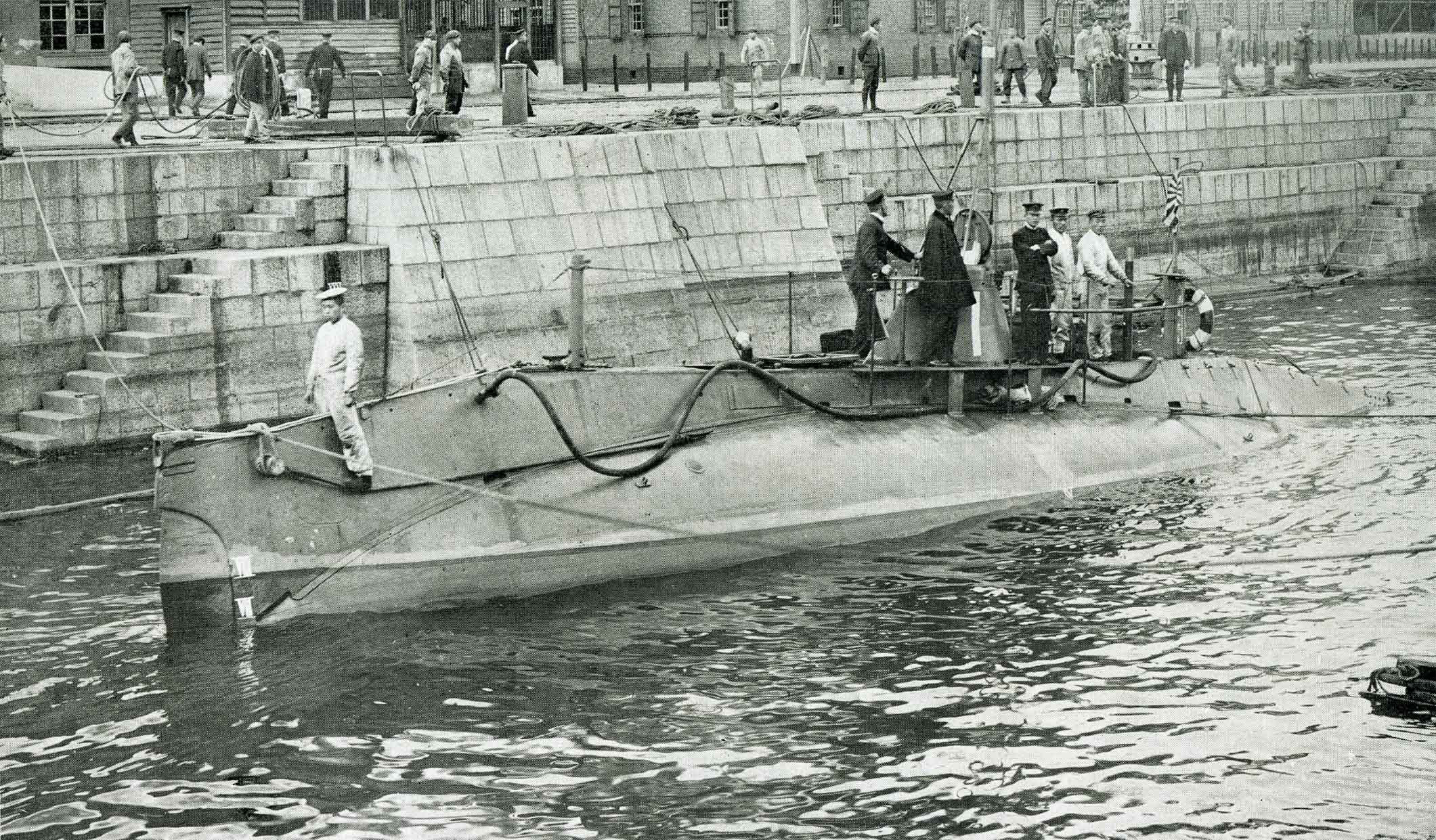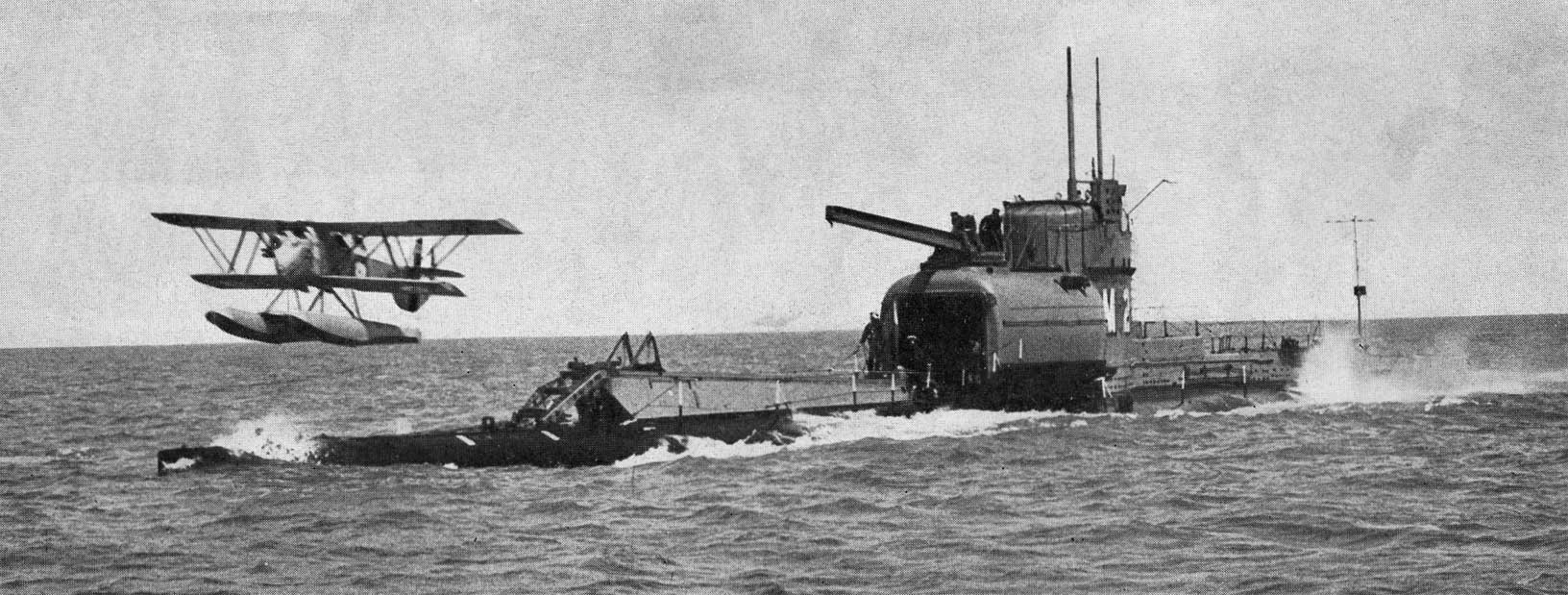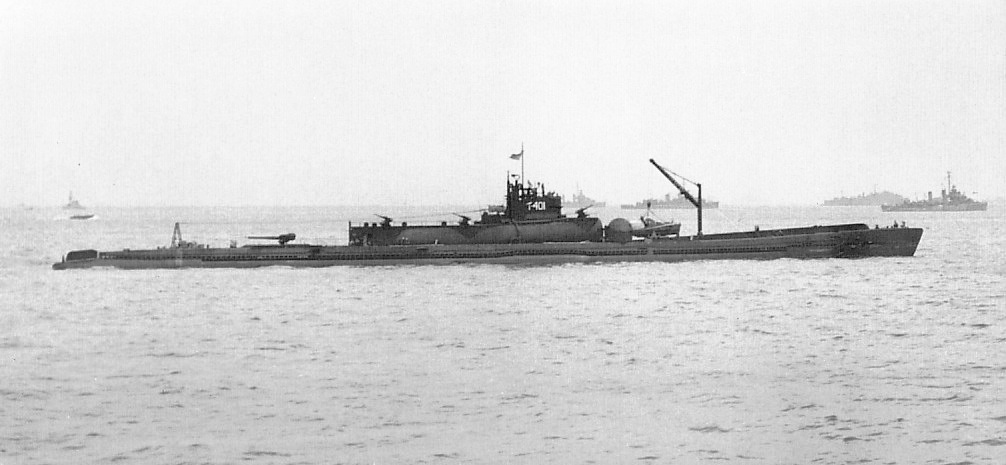|
Submarine Aircraft Carriers Of Japan
Submarine aircraft carriers were developed by the Imperial Japanese Navy to a greater extent than any other navy, before and during World War II. In total, 42 were built, as listed below (other sources say 47). Although other navies had experimented with submarine aircraft carriers, by World War II the IJN was the only navy (aside from one fielded by the French Navy) using them. They had little effect on the war, although two were used to carry out attacks on the continental United States. They all carried floatplanes, with some carrying two or three floatplanes. All apart from the first (''I-5'') had a fixed catapult and hangar or hangars, generally on the forward deck. List of submarine carriers ; Type J1M scouting submarine (one built, ''I-5'') : The first IJN submarine to carry a floatplane, completed 1 July 1932. No catapult was fitted, the I-5 aircraft was assembled on deck and lowered into the water for takeoff. Had two hangars. ; Type J2 scouting submarine (one built, ... [...More Info...] [...Related Items...] OR: [Wikipedia] [Google] [Baidu] |
Imperial Japanese Navy
The Imperial Japanese Navy (IJN; Kyūjitai: Shinjitai: ' 'Navy of the Greater Japanese Empire', or ''Nippon Kaigun'', 'Japanese Navy') was the navy of the Empire of Japan from 1868 to 1945, when it was dissolved following Japan's surrender in World War II. The Japan Maritime Self-Defense Force (JMSDF) was formed between 1952–1954 after the dissolution of the IJN. The Imperial Japanese Navy was the third largest navy in the world by 1920, behind the Royal Navy and the United States Navy (USN). It was supported by the Imperial Japanese Navy Air Service for aircraft and airstrike operation from the fleet. It was the primary opponent of the Western Allies in the Pacific War. The origins of the Imperial Japanese Navy go back to early interactions with nations on the Asian continent, beginning in the early medieval period and reaching a peak of activity during the 16th and 17th centuries at a time of cultural exchange with European powers during the Age of Discovery. After t ... [...More Info...] [...Related Items...] OR: [Wikipedia] [Google] [Baidu] |
Type B1 Submarine
The , also called was the first group of boats of the Type B cruiser submarines built for the Imperial Japanese Navy (IJN) during the 1940s. In total 20 were built, starting with , which gave the series their alternative name. Design and description The Type B submarines were derived from the earlier KD6 sub-class of the and were equipped with an aircraft to enhance their scouting ability. They displaced surfaced and submerged. The submarines were long, had a beam of and a draft of . They had a diving depth of .Bagnasco, p. 189 For surface running, the boats were powered by two diesel engines, each driving one propeller shaft. When submerged each propeller was driven by a electric motor. They could reach on the surface and underwater.Chesneau, p. 200 On the surface, the ''B1''s had a range of at ; submerged, they had a range of at . The boats were armed with six internal bow torpedo tubes and carried a total of 17 torpedoes. They were also armed with a single /40 ... [...More Info...] [...Related Items...] OR: [Wikipedia] [Google] [Baidu] |
Aircraft Carriers Of The Imperial Japanese Navy
An aircraft is a vehicle that is able to fly by gaining support from the air. It counters the force of gravity by using either static lift or by using the dynamic lift of an airfoil, or in a few cases the downward thrust from jet engines. Common examples of aircraft include airplanes, helicopters, airships (including blimps), gliders, paramotors, and hot air balloons. The human activity that surrounds aircraft is called ''aviation''. The science of aviation, including designing and building aircraft, is called '' aeronautics.'' Crewed aircraft are flown by an onboard pilot, but unmanned aerial vehicles may be remotely controlled or self-controlled by onboard computers. Aircraft may be classified by different criteria, such as lift type, aircraft propulsion, usage and others. History Flying model craft and stories of manned flight go back many centuries; however, the first manned ascent — and safe descent — in modern times took place by larger hot-air ... [...More Info...] [...Related Items...] OR: [Wikipedia] [Google] [Baidu] |
List Of Undersea-carried Planes During World War II
This is a list of aircraft carried undersea and used from submarines (see Submarine aircraft carriers). These were primarily used during the Second World War, also included for comparison are earlier developments of submarine carried aircraft from the First World War and the period between the World Wars. , - , Aichi M6A1 ''Seiran'' , , Japan , , Propeller , , portable strike monoplane torpedo-bomber , , , , , , , , , - , Arado Ar 231 , , Germany , , Propeller , , portable reconnaissance floatplane , , , , , , , , , - , Bristol-Burney X.1,2,3 , , UK , , , , flying hydrofoil , , , , , , , , , - , Caspar-Heinkel U-1 , , USA / Germany , , Propeller , , dismantlable reconnaissance biplane , , , , , , , , , - , Chyetverikov SPL , , USSR , , Propeller , , , , , , , , , , , - , Cox-Klemin XS-1 , , USA , , Propeller , , portable reconnaissance biplane , , 1920s , , , , , , , - , Cox-Klemin XS-2 , , USA , , ... [...More Info...] [...Related Items...] OR: [Wikipedia] [Google] [Baidu] |
Imperial Japanese Navy Submarines
Imperial Japanese Navy submarines originated with the purchase of five Holland type submarines from the United States in 1904. Japanese submarine forces progressively built up strength and expertise, becoming by the beginning of World War II one of the world's most varied and powerful submarine fleets. Origins The Imperial Japanese Navy (IJN) acquired its first submarines during the Russo-Japanese War on 12 December 1904 where they arrived in sections at the Yokohama dockyards. The vessels were purchased from the relatively new American company, Electric Boat, and were fully assembled and ready for combat operations by August 1905.Jentschura p. 160 However, hostilities with Russia were nearing its end by that date, and no submarines saw action during the war. The submarines that Electric Boat sold to Japan were based on the Holland designs, known as Holland Type VIIs similar to the American s. The five imported Hollands were originally built at Fore River Ship and Engine Co ... [...More Info...] [...Related Items...] OR: [Wikipedia] [Google] [Baidu] |
Submarine Aircraft Carriers
A submarine aircraft carrier is a submarine equipped with aircraft for observation or attack missions. These submarines saw their most extensive use during World War II, although their operational significance remained rather small. The most famous of them were the Japanese s and the , although small numbers of similar craft were built for other nations' navies as well. Most operational submarine aircraft carriers, with the exception of the ''I-400'' and AM classes, used their aircraft for reconnaissance and observation. This is in contrast to the typical surface aircraft carrier, whose main function is serving as a base for offensive aircraft. Early history (World War I) Germany was the first nation to experiment with submarine aircraft carriers, initiated by the Imperial German Naval Air Service commander Oberleutnant zur See Friedrich von Arnauld de la Perière who commanded a unit of two Friedrichshafen FF.29 reconnaissance seaplanes in Zeebrugge. One of the first U-boa ... [...More Info...] [...Related Items...] OR: [Wikipedia] [Google] [Baidu] |
I-400-class Submarine
The Imperial Japanese Navy (IJN) submarines were the largest submarines of World War II and remained the largest ever built until the construction of nuclear ballistic missile submarines in the 1960s. The IJN called this type of submarine . The type name was shortened to . They were submarine aircraft carriers able to carry three Aichi M6A ''Seiran'' aircraft underwater to their destinations. They were designed to surface, launch their planes, then quickly dive again before they were discovered. They also carried torpedoes for close-range combat. The ''I-400'' class was designed with the range to travel anywhere in the world and return. A fleet of 18 boats was planned in 1942, and work started on the first in January 1943 at the Kure, Hiroshima arsenal. Within a year the plan was scaled back to five, of which only three ( I-400 at Kure, and and I-402 at Sasebo) were completed. Origins The ''I-400'' class was the brainchild of Admiral Isoroku Yamamoto, Commander-in-Chief of ... [...More Info...] [...Related Items...] OR: [Wikipedia] [Google] [Baidu] |
Type B3 Submarine
The was a class of submarine in the Imperial Japanese Navy (IJN) which served during World War II. The ''Type-B'' submarines were similar to the ''Type-A'' apart from not having the headquarters installation. Class variants The ''Type-B'' submarines were divided into four classes: * * * * . The ''5115th vessel''-class submarines were not built and remained a design only. ''Type-B'' (''I-15'' class) Project number S37. Twenty boats were built between 1937 and 1944 under the Maru 3 Programme (Boats 37 - 42) and Maru 4 Programme (Boats 139 - 152). ''Type-B Mod.1'' (''I-40'' class) Project number S37B. Six boats were planned under the Maru Kyū Programme (Boats 370 - 375), all boats were completed. On the outside this class looked the same as the ''I-15'' class; however, they were built from high-tensile strength steel and equipped with diesel engines of a simpler design. ''Type-B Mod.2'' (''I-54'' class) Project number S37C. Twenty-one boats were planned under th ... [...More Info...] [...Related Items...] OR: [Wikipedia] [Google] [Baidu] |
Type B2 Submarine
The was a class of submarine in the Imperial Japanese Navy (IJN) which served during World War II. The ''Type-B'' submarines were similar to the ''Type-A'' apart from not having the headquarters installation. Class variants The ''Type-B'' submarines were divided into four classes: * * * * . The ''5115th vessel''-class submarines were not built and remained a design only. ''Type-B'' (''I-15'' class) Project number S37. Twenty boats were built between 1937 and 1944 under the Maru 3 Programme (Boats 37 - 42) and Maru 4 Programme (Boats 139 - 152). ''Type-B Mod.1'' (''I-40'' class) Project number S37B. Six boats were planned under the Maru Kyū Programme (Boats 370 - 375), all boats were completed. On the outside this class looked the same as the ''I-15'' class; however, they were built from high-tensile strength steel and equipped with diesel engines of a simpler design. ''Type-B Mod.2'' (''I-54'' class) Project number S37C. Twenty-one boats were planned under th ... [...More Info...] [...Related Items...] OR: [Wikipedia] [Google] [Baidu] |
Japanese Submarine I-25
was a B1 type (''I-15''-class) submarine of the Imperial Japanese Navy that served in World War II, took part in the Attack on Pearl Harbor, and was the only Axis submarine to carry out aerial bombing on the continental United States in World War II, during the so-called Lookout Air Raids, and the shelling of Fort Stevens, both attacks occurring in the state of Oregon. ''I-25'', of 2,369 tonnes (2,600 tons), was long, with a range of , a maximum surface speed of and a maximum submerged speed of . She carried a two-seater Yokosuka E14Y reconnaissance floatplane, known to the Allies as "Glen". It was disassembled and stowed in a hangar in front of the conning tower. First patrol In World War II, ''I-25'' served under the command of Lieutenant Commander Akiji Tagami who had graduated from Class 51 at Etajima, Hiroshima. 26-year-old Lieutenant Tatsuo Tsukudo was the executive officer(XO) on ''I-25''. ''I-25'' departed Yokosuka on 21 November 1941 in preparation f ... [...More Info...] [...Related Items...] OR: [Wikipedia] [Google] [Baidu] |
Type AM Submarine
The , also called was a pair of large, aircraft-carrying cruiser submarines built for the Imperial Japanese Navy (IJN) during World War II. Design and description The Type AM submarines were versions of the preceding A2 class with the command facilities replaced by an enlarged aircraft hangar, which was fitted for a pair of Aichi M6A1 floatplane bombers.Layman & McLaughlin, p. 176 They displaced surfaced and submerged. The submarines were long, had a beam of and a draft of . They had a diving depth of .Bagnasco, p. 189 The machinery was reduced in power from the A2-class boats. For surface running, the boats were powered by two diesel engines, each driving one propeller shaft. When submerged each propeller was driven by a electric motor. They could reach on the surface and underwater.Chesneau, p. 200 On the surface, the ''AM''s had a range of at ; submerged, they had a range of at . The boats were armed with six internal bow torpedo tubes and carried a total o ... [...More Info...] [...Related Items...] OR: [Wikipedia] [Google] [Baidu] |
World War II
World War II or the Second World War, often abbreviated as WWII or WW2, was a world war that lasted from 1939 to 1945. It involved the vast majority of the world's countries—including all of the great powers—forming two opposing military alliances: the Allies and the Axis powers. World War II was a total war that directly involved more than 100 million personnel from more than 30 countries. The major participants in the war threw their entire economic, industrial, and scientific capabilities behind the war effort, blurring the distinction between civilian and military resources. Aircraft played a major role in the conflict, enabling the strategic bombing of population centres and deploying the only two nuclear weapons ever used in war. World War II was by far the deadliest conflict in human history; it resulted in 70 to 85 million fatalities, mostly among civilians. Tens of millions died due to genocides (including the Holocaust), starvation, ma ... [...More Info...] [...Related Items...] OR: [Wikipedia] [Google] [Baidu] |




